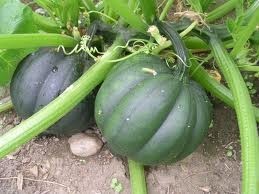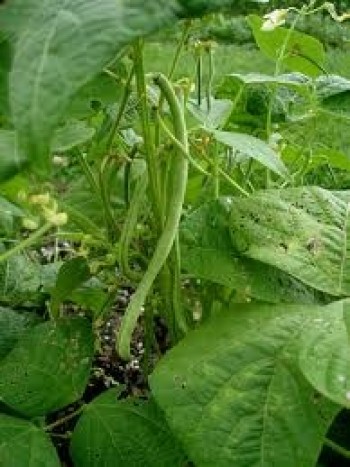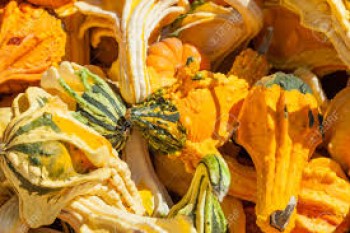
Tags: Hybrid
Growing Practices: No Pesticides No Herbicides No Fungicides No Synthetic Fertilizers
Latin Name: Cucurbita pepo
Days to Maturity: 80
Description:
the fruits are a little larger with a more attractive shape, and the flavor is better. Semi-bush plant. Avg. yield: 5-7 fruits/plant. Avg. weight: 3 lb.
Growing Tips:
CULTURE:
Fertile, well-drained soil is best.
FROM TRANSPLANTS:
Sow 2-3 seeds in 2" containers or plug trays 3 weeks before transplanting outdoors. Thin to 1-2 plants/cell with scissors. Transplant after frost danger when weather is warm and settled, about 18" apart for bush and small-fruited varieties, and 24-36" apart for large-fruited varieties. Take care not to disturb roots! Plastic mulch and fabric row covers will help plant establishment and exclude insect pests.
DIRECT SEEDING:
Sow in late spring after frost danger when soil is warm, minimum 62°F (17°C) for treated seeds and 70°F (21°C) for untreated seeds - seeds will rot in cool soil, especially cool, wet soil. Sow 1-2 seeds every 12" (24-36" for large-fruited varieties) 1/2-1" deep. Thin to 1 plant per spot. Rows 6' apart, 12' apart for larger fruit.
DISEASES:
Cucumber beetles can carry bacterial wilt and must be controlled. Gummy stem blight (black rot) causes black, sunken spots to appear on fruits in storage and the tan scabby patches on Butternuts in the field. Downy mildew may occur in damp weather, powdery mildew in cooler, dry periods and in late summer. Consult your local Extension agent for specific fungicide control. Choose well-drained soil to avoid phytopthora.
SPRING COLD PROTECTION:
AG-19 (heavier grade) floating row covers will provide about 4° of frost protection and add warmth for vigor and an earlier harvest.
INSECT PESTS:
Protect young plants with floating row covers (see Index). Cucumber beetles, squash bugs, and vine borers can be a challenge. Pyrethrin offers some control. Squash bug eggs laid on the underside of leaves may be located and crushed. Keep borders well mowed. For vine borers, cut out of vines and hill soil over the wound. Clean up refuse in the fall, and spring-plow the ground to bury the pupae. The Butternut type has solid vines usually not bothered by borers.
FALL FROST:
Frost kills leaves and can thus facilitate harvest; however, it can also damage fruits and cause spotting and poor storage. Mature fruits can usually tolerate 1 and sometimes 2 or 3 light frosts without substantial damage. Sprinkler irrigation wards off moderate frost damage to fruits.
HARVEST:
Before heavy frost, cut stems about 1" from the fruit when stem is drying and skin is hardening. Handle fruits like eggs!
CURING:
Cure in the field to dry and toughen skins by exposing fruits to sun for 5-7 days or so, covering in the evening if frost is likely. An indoor method of curing is to expose squash to 80-90°F (27-32°C) with ventilation for 3-5 days.
STORAGE:
Store at 50-60°F (10-15°C), 50-75% relative humidity, and good air circulation. An accumulation of sub 50°F (10°C) exposure events causes chilling injury, reducing storage life.
DAYS TO MATURITY:
From direct seeding; subtract about 14 days if transplanting.
Questions 0 Total
Ask a Question About Acorn Squash Dark Green
Policies
Shipping Policies
We ship flat rate priority through USPS with an average charge of $6.00, we do not ship outside of North America and usually ships within 2-5 business days.
Return & Refund Policy
No refunds are being taken at this time but we hope to hear your feedback. Thank-You!
Other Policies
If you have any questions feel free to contact us with our email at... andysrabbitranch@gmail.com We will get back to you Withing 24 hours guaranteed
Andy's Rabbit Ranch
Parma, NY,
United States (Zone 6b)
Established in 2012
1.30
acres in production




